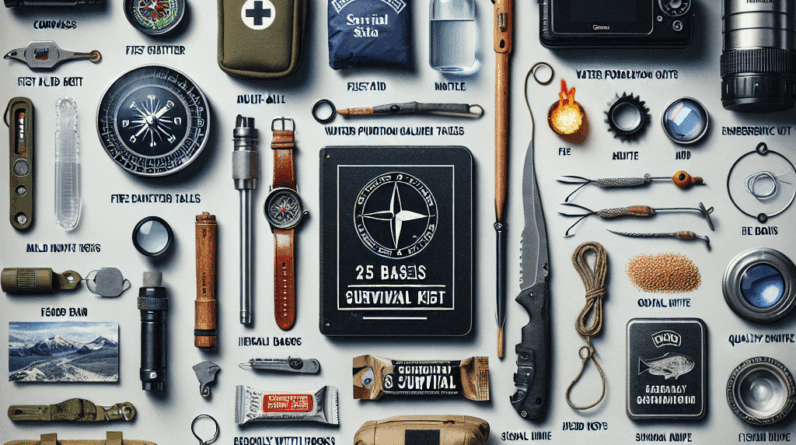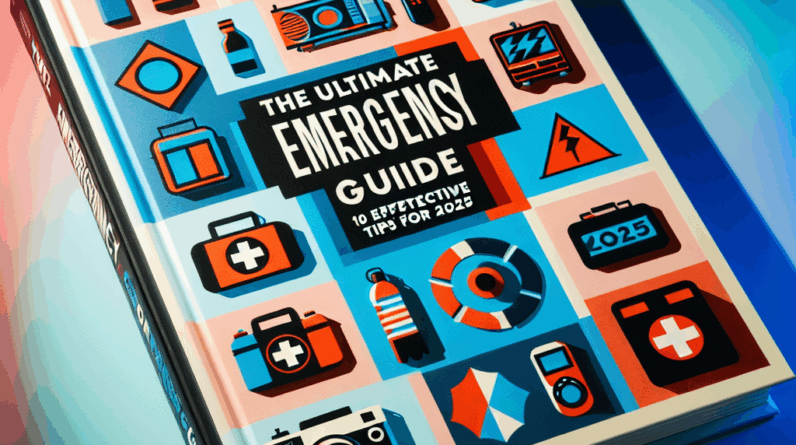Thunderstorms and lightning can strike with little warning, but with the right preparation, you can significantly minimize risks and ensure safety for yourself and your loved ones. This guide provides comprehensive strategies for staying informed, creating an emergency plan, securing your home and property, and maintaining safety during and after the storm.
Stay Informed About Weather Updates
# Use Reliable Weather Apps
In our digital age, staying updated about weather conditions is easier than ever. I highly recommend using dependable weather apps, such as the Weather Channel app and AccuWeather. These apps provide not only hourly updates but also critical alerts about upcoming storms, which have helped me avoid unexpected weather surprises multiple times.
Ensure that you enable notifications on these apps to receive timely severe thunderstorm warnings and lightning alerts. Being proactive rather than reactive is crucial when dealing with nature’s unpredictability.
I also regularly check local news stations and community boards for updates that might not be immediately available on national apps. Staying well-informed is essential, especially when it comes to weather preparedness.
# Understand the Radar
Understanding weather radar is a vital tool in your storm preparedness arsenal. When I first learned to use weather radar, it significantly enhanced my ability to anticipate storm impacts. Weather radar not only shows the current location of storms but also their projected paths, helping you decide whether you need to take immediate action or if you have time for one more cup of coffee.
Take some time to learn how to interpret radar images. For instance, red and orange indicate intense rainfall, while green usually signifies lighter rain. A radar set to loop mode offers a dynamic view of how storms develop and move, which can be invaluable in planning your response, such as securing outdoor items or deciding whether to stay put or seek shelter elsewhere.
Many weather apps now include features for tracking storms, enhancing your ability to make informed decisions about whether to hunker down or evacuate to a safer location, such as a friend’s house with power backup. This knowledge can significantly enhance your safety and peace of mind.
# Listen for Alerts
The sound of a weather alert can be startling, but it’s also a crucial signal to start your preparation process. I recommend keeping a battery-operated NOAA Weather Radio handy, as it provides real-time weather updates and is indispensable when power outages occur during severe storms.
While it’s important to monitor your phone for alerts, remember that cell service can be unreliable or overwhelmed during severe weather events. Therefore, having multiple methods to receive warnings is advisable.
Additionally, be aware of natural warning signs, such as increasing wind or thunder, and start preparing immediately. Being caught unprepared in the middle of a severe storm is a situation best avoided.
Create an Emergency Plan
# Plan Your Safe Space
Identifying a safe space in advance is a critical element of storm preparedness. In my home, the basement, free from windows, serves as our safe area. If you live in an apartment, consider an inner hallway or a small, windowless room as your safe space. It’s important that all household members know where to go when a storm approaches.
Compile a checklist of essentials to bring to your safe space, including flashlights, water, a first aid kit, and snacks. Being well-prepared can make the wait out a storm more comfortable and less stressful.
Don’t forget to make provisions for your pets as well; they also need protection and comfort during disruptive weather.
# Establish Communication Methods
Storms can disrupt power and communication lines. Discuss with your family how you will communicate in the event of a storm. Establishing a meet-up location in case you get separated is also wise.
Text messages may still be sent when phone calls cannot, so setting up a group chat for your family and close neighbors can keep everyone informed during the storm.
Check on neighbors, especially those who are elderly or have special needs, to ensure everyone’s safety and strengthen community ties.
# Practice Safety Drails
Conducting storm safety drills can make actual emergencies less daunting. These rehearsals help everyone know what to do and where to go without panic, making the response more effective.
Involve children in these drills to reduce their anxiety during real storms. Understanding the plan provides them with a sense of security and helps them know what to expect.
Prepare Your Home and Property
# Secure Outdoor Items
Before a storm, secure or store outdoor items like garden furniture, grills, and children’s toys to prevent them from becoming projectiles during high winds. Larger items may need additional securing with sandbags or even removal.
Trimming trees and removing dead branches can prevent damage to your property and your neighbor’s during a storm. A well-maintained yard and timely precautions can safeguard everyone’s safety.
# Inspect Your Home’s Infrastructure
Regularly check your home for potential vulnerabilities. Ensure your roof, windows, and gutters are intact and functional to prevent water damage. Installing storm shutters or boarding up windows can provide additional protection during particularly severe storms.
# Have Emergency Supplies Ready
Prepare an emergency kit with essentials like bottled water, non-perishable food, a manual can opener, and hygiene products. Keep your devices charged and your emergency supplies organized to ensure quick access during a storm.
Stay Safe During the Storm
# Follow Safety Protocols
When a storm hits, it’s crucial to remain calm and follow your preparedness plan. Ensure everyone is in the safe space with necessary supplies.
Maintain open lines of communication to manage anxiety and ensure everyone remains informed about the storm’s status.
# Monitor Weather Updates
Even from your safe space, keep monitoring weather updates through reliable apps and your NOAA radio. Staying informed helps manage expectations and maintains a sense of control over the situation.
Communicate with family and check on neighbors, ensuring that everyone is safe and informed.
# Wait It Out Safely
After the storm, resist the urge to immediately go outside. Wait until it’s declared safe. Carefully assess your surroundings for hazards like downed power lines or structural damage.
Once safety is assured, check on neighbors and offer help. Community support is invaluable in the aftermath of a storm.
FAQs
# 1. What should I include in my emergency kit?
Your emergency kit should contain essentials such as bottled water, non-perishable foods, a flashlight, batteries, a first aid kit, a manual can opener, hygiene supplies, and any necessary medications.
# 2. How can I secure my home before a storm?
Secure loose outdoor items, inspect seals on windows and doors, and trim overhanging branches to reduce the risk of damage and injuries.
# 3. What should I do during a thunderstorm?
Stay in your designated safe space away from windows, keep updated with weather apps and a NOAA radio, and avoid using electrical devices. Maintain communication with family and friends to ensure everyone’s safety.
# 4. How do I know when it’s safe to go outside after a storm?
Wait for official confirmation that it’s safe to venture outside. Be cautious and check for hazards like downed power lines before exploring your surroundings.
# 5. What resources can I use to stay informed about storms?
Utilize reliable weather apps, NOAA Weather Radio, and local news stations to receive real-time updates and alerts.
Visit [PrepareMag](https://preparemag.com/subscribe) to subscribe for more preparedness and self-reliance tips.




